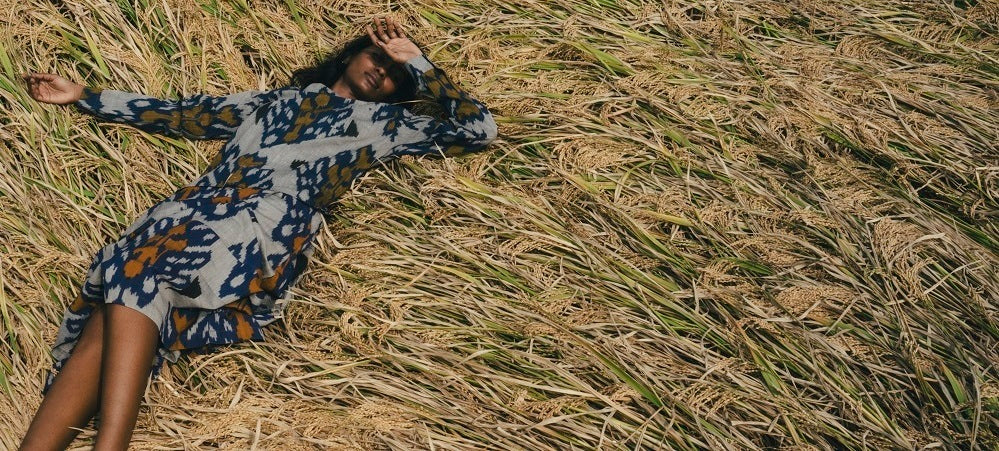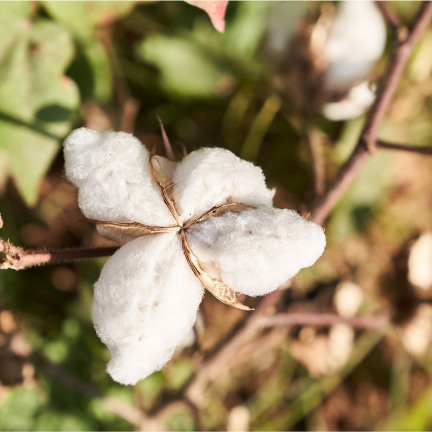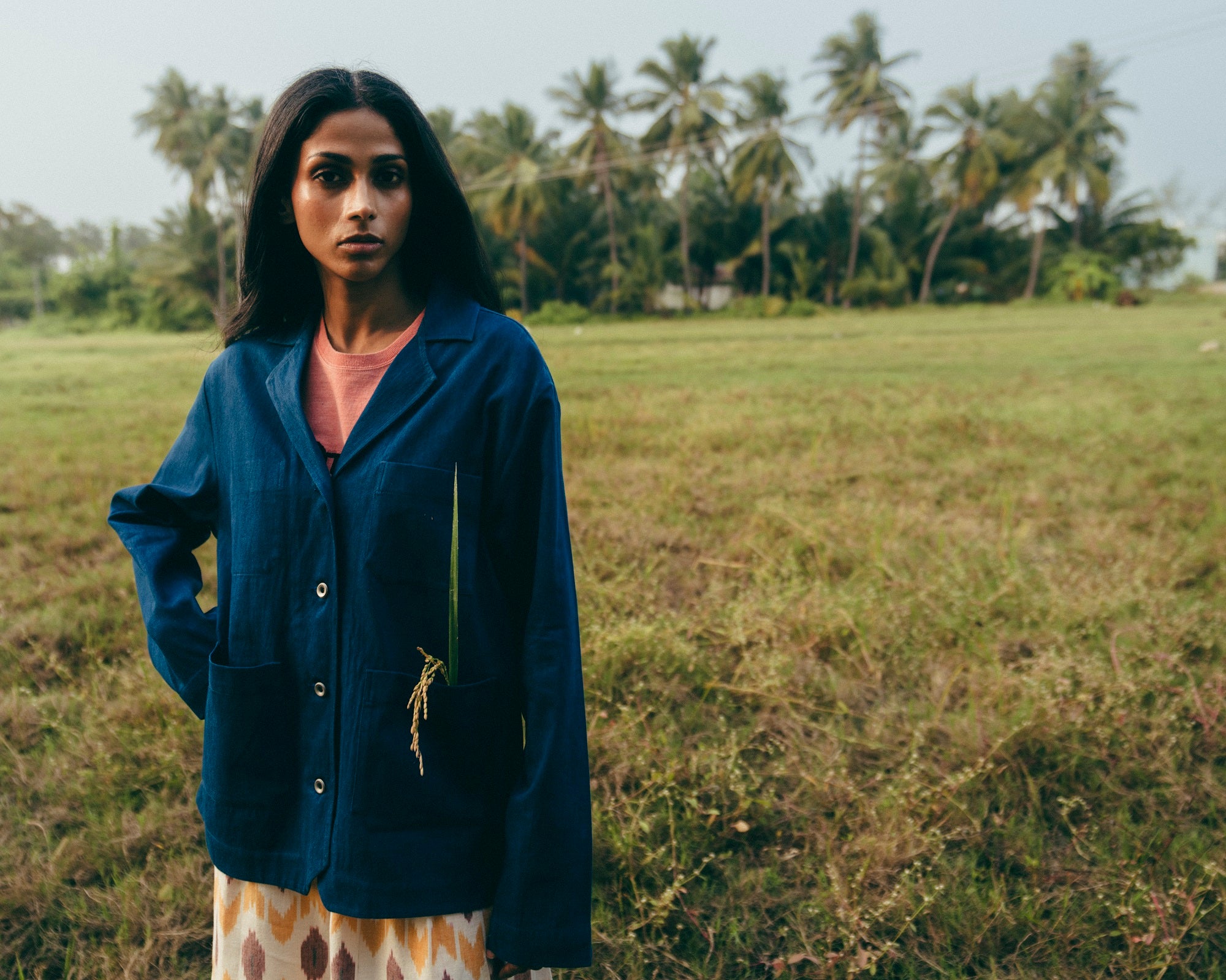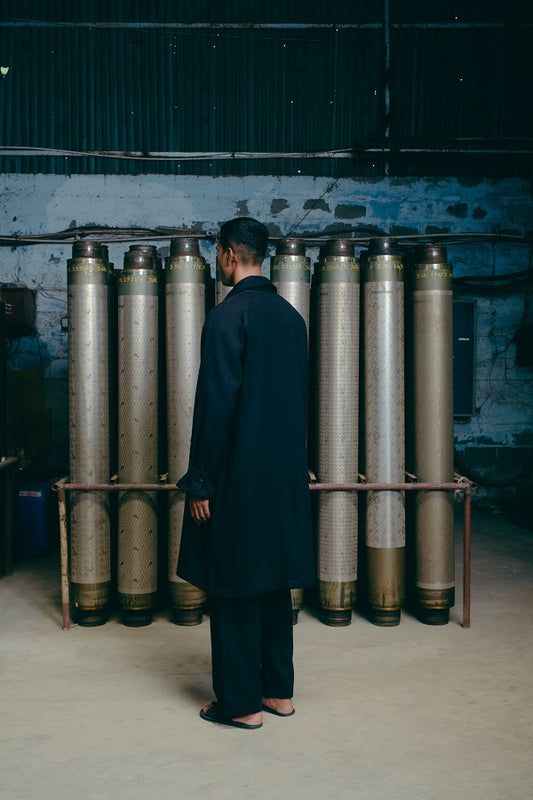For the first in a series of conversations, we invited Fibershed founder Rebecca Burgess to join Nishanth Chopra founder of Ōshadi for a conversation on Zoom. We invite our community to these open meetings, to listen and take part in the discussions we then publish here. The point of these conversations is to connect with the people who contribute to the work of the Collective, so we can share our learnings and our exchanges.
Rebecca Burgess was a key inspiration and the facilitator of the first five acres of regenerative cotton grown on the Ōshadi farm in Erode, south India. The work she had been doing with Fibershed, a movement of regional and localised networks set up to grow, make and distribute our clothes in an equitable and enriching way, resonated with Nishanth. Instead of the typical business model where brand bosses get rich at the expense of the workers and farmers who are squeezed every way possible, Fibershed systems value the ancient ways in which local communities and families worked together to spin, weave, dye and sew their clothes from the cotton grown on local farms - and shared the profits. The importance of relationships and connections were, he realised, precisely what was missing from the way fashion and textiles were being produced.
Rebecca's Fibershed system helped him to crystallise the idea of joining the dots between the ancient ways of farming the land using cover crops and rotation, without pesticides and chemicals, and to navigate the initial organisation and contracts with the farmers who needed to be convinced that moving away from chemicals and GMO seeds made better financial sense, while ensuring the soil was looked after for future crops. Rebecca also introduced him to the Californian fashion brand Christy Dawn, which has since partnered with Ōshadi Collective and helped it to grow to its current size of 65 farms and small holdings of around 2 acres each. Here, Rebecca and Nishanth talk about how they met, and how they continue to learn from and support each other.
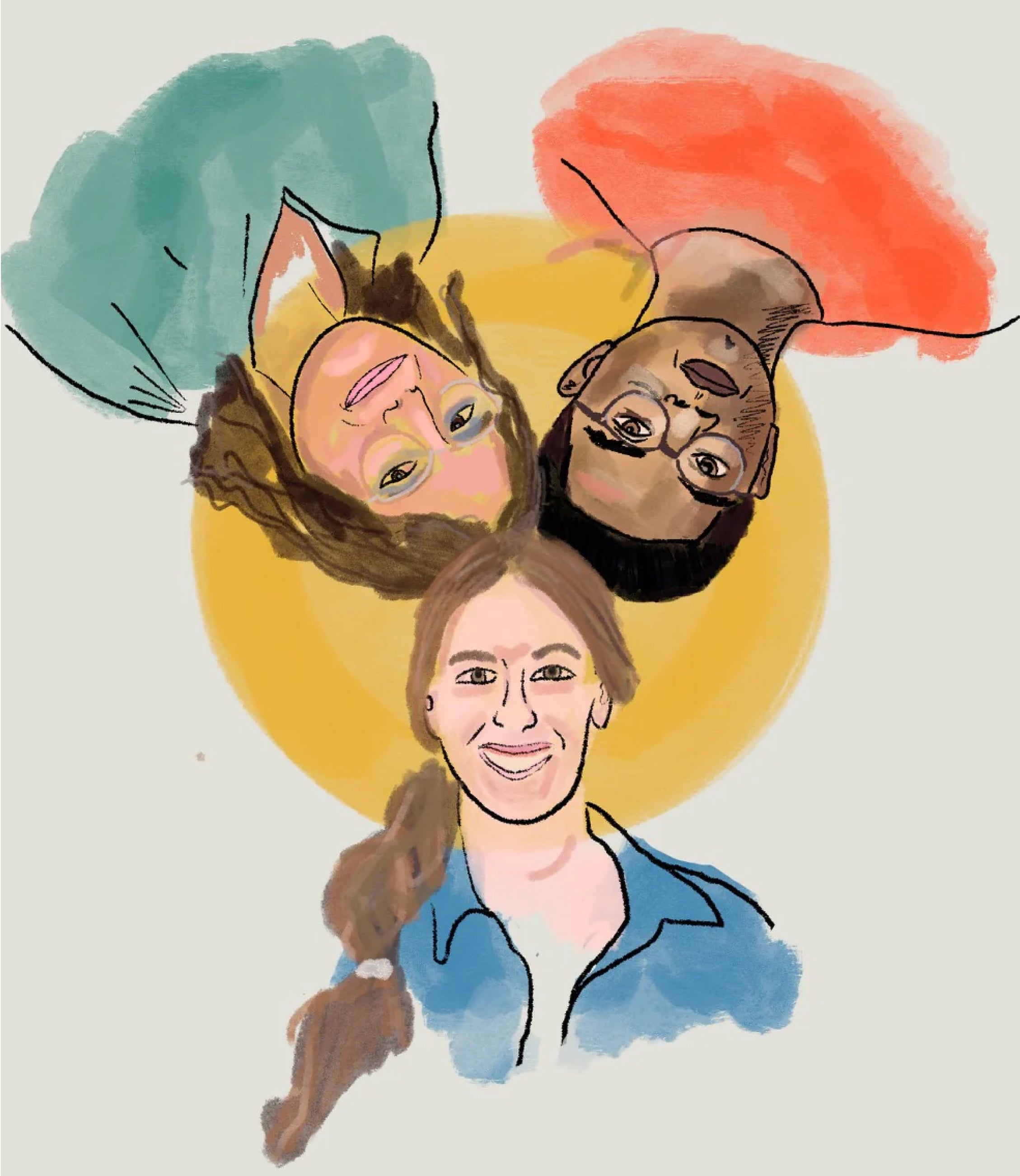
Tamsin Blanchard : Welcome to the first in a series of conversations that will be recorded and transcribed for the Ōshadi journal. I’m delighted to be joined by Ōshadi Collective co-founder and general force of nature – literally – Nishanth Chopra. And we’re very thankful to Rebecca Burgess, the founder of Fibershed, for being our first guest.
We’re going to be talking about the importance of relationships, exchanging knowledge, the difference between growing cotton in California and Erode in south India, and how it is possible for fashion to flourish without being greedy. Rebecca had been inspirational for Nishanth when he began to set up his regenerative cotton farm, beginning with five acres back in… when was that Nishanth?
Nishanth Chopra: 2019.
TB: And how many acres are part of the collective now?
NC: Two hundred and 50 acres.
TB: Two hundred and 50 acres, so that’s in three years.
NC: Yeah, three years, but when I say 250 acres, it’s yearly acres, so 125 in March and 125 in August, so we don’t farm in the same place. We have a crop rotation, and then we have a green manure, and then we go back to cotton again. So, we always switch between these two batches. What we sow in August, gets harvested and the next cotton crop again on the same land is [the following August].
TB: So we’re going to get into a bit more around the technicalities. But first, I’d like to ask Rebecca if you can briefly tell us, for anyone new to the idea, What is a Fibershed? How many of them are there now? And how do you see this movement developing?
Rebecca Burgess: Fibershed is just a strategic geography that defines a textile resource base. There’s 58 Fibershed communities doing work at the level of soil and then aiming for, in many cases, the value addition systems that can be paired with the farming community, so that they can make an endemic textile that represents the geomorphology and the precipitation patterns and the ecological opportunities and constraints of a region.
A cotton farm in California cannot be farmed in exactly the same way as one in India. While Nishanth is able to drip feed his crops using rainfed irrigation with water collected at rainy times of the year, farmers in more arid regions have to find other solutions. Different regions have different challenges, different climates, different ways of using the land. The average farm in California is 18,000 acres while for Oshadi, farms are patchworked into small plots of land, each with a separate owner. There are many nuances, and regional, cultural and technical differences. All of these things need to be taken into account when building a fibershed.
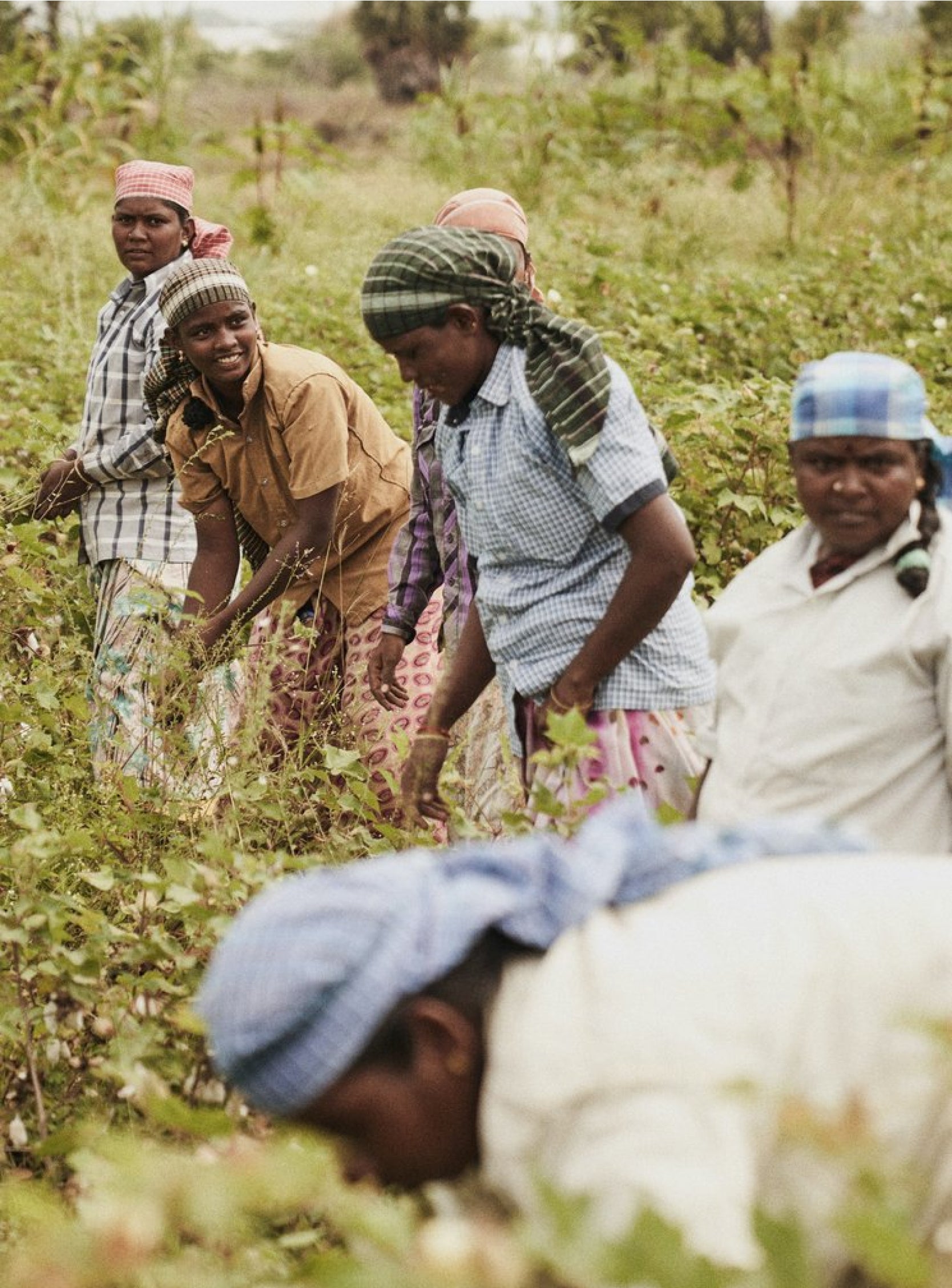
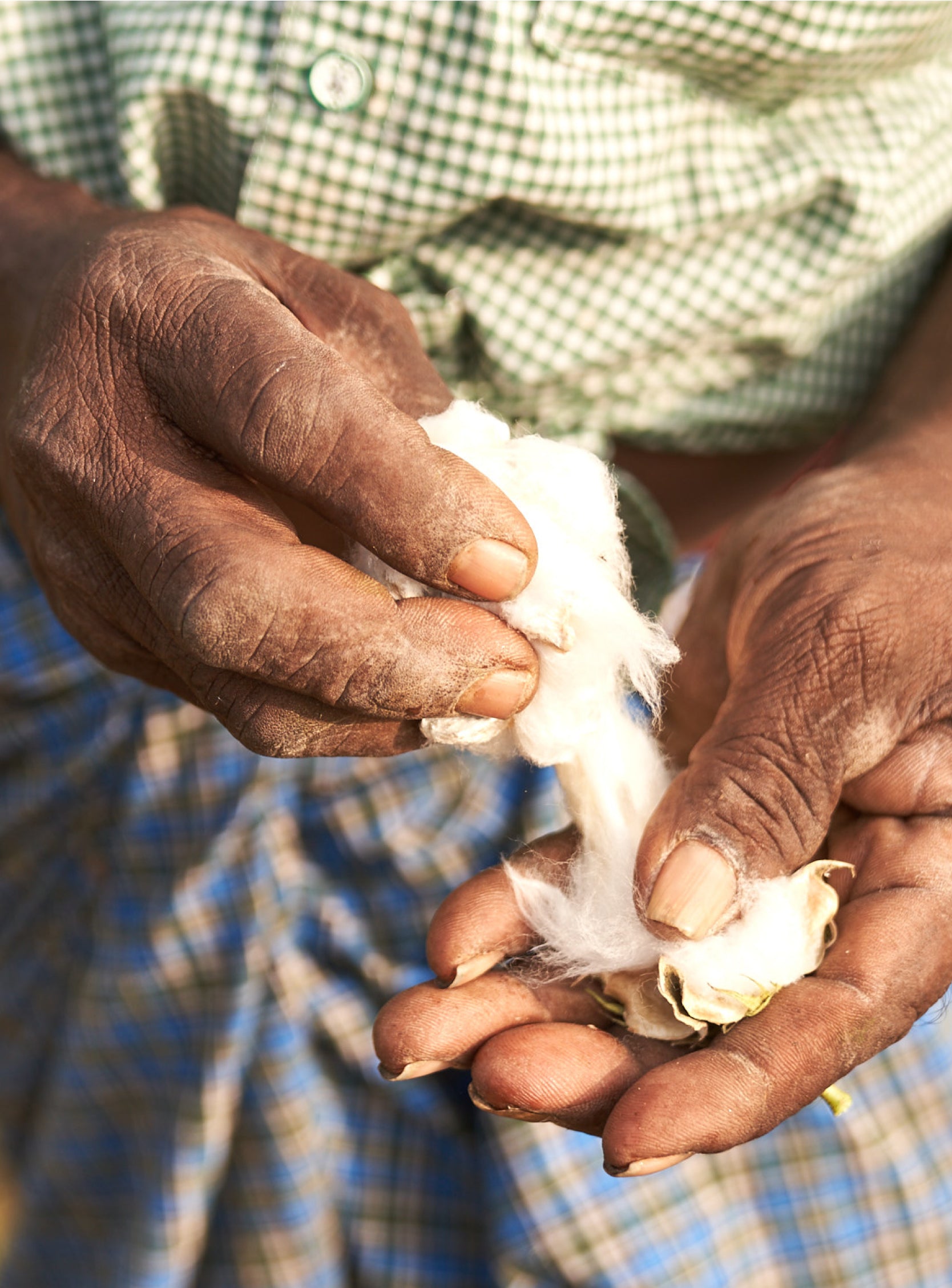
RB: These communities are really meant to support an incorporation of what we’re wearing with ecological systems services, you could say – like honouring pollination, honouring hydrology, carbon cycling. The clothes are meant to enhance and help those systems flourish and become more diverse. And it’s just going a different direction than what we tend to think about: systems doing harm. The best case scenario we have is that we just do less harm. So we’re trying to say, you know, well, there’s actually something we could do. It’s far more engaging with ecosystems if humans play their role as a keystone species and embrace that and embody that.
TB: I think what’s so incredible about Fibershed is that it is a movement that talks about making things actually better. It’s not just about trying to do less bad. And I feel as if you are both great connectors of people and systems and ideas. And I wanted to start by hearing from Nishanth. How did you find out about Fibershed? And how did you connect with Rebecca? I know that set off a sequence of events for you that have been really quite impactful.
NC: Yeah. I think it was about in 2019. Ōshadi started as a fashion brand and then we started making textiles for some friends and some brands who share similar values and, and my curiosity to look into more, how’s the fabric made? How was a textile made? The dyes? Of course, the start of everything is a farm.
I watched a movie called Merku Thodarchi Malai. It’s a Tamil movie which talks about this vicious circle of farmers caught up in taking a loan to pay for the pesticides and the land becomes more prone to chemicals and then they buy more and then they start realising that, Oh shit, they made a mistake. It takes them a lot of time to return back to the natural system.
I woke up the next day, and listened to a podcast. Rebecca is on the podcast and she’s describing this model and I was like, Oh my god, I can’t believe this. Everything I was thinking about that we should do. So I just cold-guessed her email. I thought, I’m never gonna hear back. But then I got an email! What Rebecca envisioned, it’s like an evolution from ancient fibre shed. There’s [an illustration I’d seen of a] village and in the village there’s this old woman spinning some yarn. And right beside the spinning area is the farm and the man is in the farm, harvesting cotton. And there’s another person from the family weaving it. And there’s another person from the family sewing the garments and then going into the market in the village. And he’s selling it there. So everything from back in the day, like I don’t even know how many hundred years or maybe more than that.
Back in the day, it was not so easy for someone to travel 100 kilometres and sell garments. So they had this fibre shed and that’s what I thought Fibershed was, and then I listened to Rebecca describing this, that there should be a mill and everything should be close by. This is just a take on ancient things. But it’s in the modern world. We live in a globalised world, we cannot function the same way that a fibre shed used to function but we can adapt it to the current world we are in and that’s why we thought farming and every other process around it, like spinning, weaving, agriculture, using traditional ecological practices, enhancing practices, and all of those things I listened to that in podcast… And I reached out and it just happened. So that’s how we ended up meeting and created the Fibershed model [in Erode] and met Christy Dawn, one of our key brand partners for Oshadi Collective.
“These communities are really meant to support an incorporation of what we're wearing with ecological systems services, you could say, like honouring pollination, honouring hydrology, carbon cycling, the clothes are meant to enhance and help those systems flourish and become more diverse.”
- Rebecca Burgess
TB: So for you, Rebecca, what did you think of what Nishanth was doing?
RB: Well, it thrilled me. In 2005, I had been to Southeast Asia. And that’s where the Fibershed model for me crystallised.
Rebecca was living in Marin County, which had been colonised from the Coast Miwok community.
The colonisation model had already taken parts and pieces and separated them, which is what the economic model tends to do. It centralises and it divorces things from other parts and pieces. They’re actually supposed to be integral to each other. So I didn’t have a lot of working models. When Nishanth contacted me, I said Well, actually the model that I’m thinking about, I’m thinking about your community, like you are the teacher. So you’re contacting me, asking me for information or just to share notes or swap notes, but I am your student. It’s your community that has held this.
It makes me kind of emotional, because it really was… it brings back that feeling of like, Wow, we can bring this into the modern world. And because the past has so much that it offers and we’re so willing as a species to go with the next shiny new thing while leaving behind critical aspects of technology and resilience technologies that we need and we should never throw over the shoulder like a chicken bone we’ve just eaten, you know, it’s… these technologies can be reclaimed and re-envisioned and so Nishanth’s agro-ecological model to me… we ended up doing live feeds where Nishanth was on his farm and people in the US were watching how they’re using cow urine to make these special compost teas. Nishanth can get into the agronomic pieces, because they’re ingenious. It comes down to the species of cow that you’re working with.
Ōshadi Collective has only indigenous cows and bulls, a mix of different breeds like kangayam, gir, sahiwal and tharparkar. They have adopted these cattle from cow shelters around Erode. They chose these particular breeds because they make fertilisers and pest repellent preparations using the cow dung, milk, curd and cow urine. These preparations can be only made with indigenous cows. The rumen (or largest stomach compartment) of indigenous cows has many beneficial microbes which makes the cow dung essential for the use in organic preparations.
It’s the rumen of the animal that is so critical to these biological communities that we’re a part of. Anyway, I just felt like, you’re reaching out to me, but I want to learn from you. That was the basic premise, the basic dynamic to the relationship. And then how can I be of assistance so that this can proliferate?
On their first call, Nishanth had explained that his father had a textile factory which was part of the conventional system. But he had travelled around India and observed craftspeople at work, and the way that the industrialisation of the craft of making textiles didn’t necessarily increase quality of life. For Rebecca, Nishanth was questioning materialism – what are we actually going after as human beings?
TB: Can you tell us a little bit about where you learned or who you learned from? Because you’re not a farmer.
NC: I travelled a lot in the initial days of work, and I was very fascinated by farming. Sometimes you don’t realise what you’re thinking about until you see an illustration of that, or until you talk about that to someone. So Rebecca kind of opened the first door for us. I had applied for so many grants and support and all that stuff before. But that was the sign: do it and you go back and, you know, we started that five-acre plot.
TB: So that was literally seed funding from Fibershed that helped you start those first five acres?
NC: Yeah, it was a micro grant. Plus the connection Rebecca helped me make with Christy Dawn, and they have been our key partner, they’ve stayed with us, they’ve grown with us. And they stay committed, that’s the most important thing. So many brands come and go. Rebecca also helped me set up, look through the logistics, the contract side of stuff, how we should be working the communication. So we worked with an environmental and business lawyer who was funded by Fibershed. This was the support I got from Fibershed.
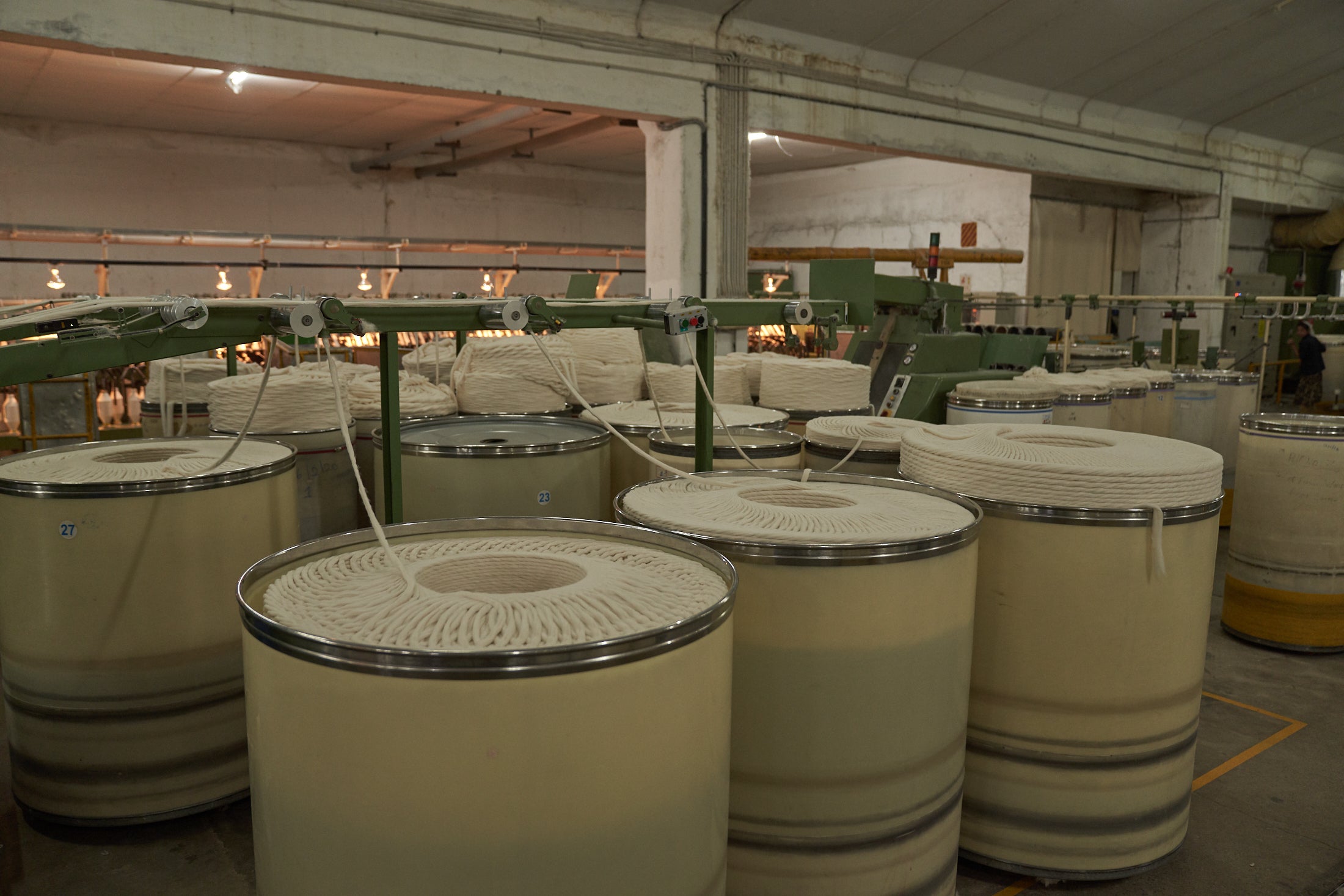
TB: Nishanth and I were talking yesterday, Rebecca, just comparing the idea of setting up a cotton farm in California and doing what Nishanth is doing in India, and we were talking about how there’s a lot of difference just in terms of scale, how, you know, the areas of land that you can work with in California. And I wondered if you could tell us a little bit about the cotton project that you’re working on as part of the California Fibershed.
RB: Yeah, the scale of land. I’ve talked a lot about this. Due to the way California’s labour laws and history of labour existed and the way that we’ve allocated water rights since the 1800s – how water is delivered. Who has those rights? Who’s labouring on the farm. What are their rights? [has resulted in] farm sizes that are 9,000 acres, 10,000 acres. So when Nishanth and I talk about acres of farming versus people who make decisions on those farms, we’ve joked around and it’s like, how do you create change on lots of land?
Because of the scale of the farms in California, Rebecca has to work with fewer people to make large-scale change happen across, say, 18,000 acres, while Nishanth has to have conversations with hundreds of farmers to engage each one and encourage them to switch to different ways of working their patch of land. Both come with their own challenges. But in California, the process is mechanised, using cotton pickers that can cost $1.2 million each and which harvest eight or nine rows at a time. So the system is very rigid and hard to change. If a cotton plant is introduced that is a different height, for example, it means the machines have to be changed. In India, hand pickers adapt to the height of the plant. Rebecca has to change only a few people’s minds, but there is expensive equipment to change, not to mention the stranglehold of contracts selling genetically engineered seed.
I definitely have my challenges with my team in seeing and assisting in soil building work, in supporting soil biological shifts. California has lost a lot of the carbon in the soil. Snowpack used to be at 5,000 feet elevation, and the snow would melt right after our rainy season. So our rivers and our tributaries would be filled with snow melt after a rainy season. Even in a very highly variable weather pattern, which is a dry season and a wet season and sometimes really deep drought cycles, we still had the snowpack to help us irrigate. That’s all changing now, our snowpack is going into precipitation under climate change. So the role of cotton or any irrigated landscape is really changing.
So my thing is grow less cotton on fewer acres, but grow it really well. We need to pay more for every pound of cotton, so that we are actually shrinking acreage in our state, but doing it so, so well. And then surrounding those fields, we need pollinator strips, windbreaks, hedgerows, we need to rehydrate California. And I want to see that rehydration process include agriculture. Agriculture absorbs water into the system but if there’s a hydrologic cycle, water’s going into aquifers. Yes, it’s going into plant material, but it’s also cycling. And the amount of these small water cycles is something I could get into, but I won’t, but they’re very important.
Basically, that work of soil biological communities – and enhancing those communities – is the key work that we’re trying to do. [In California] we have very few people in the field. We have a very mechanised system, it’s just a different thing. But we have so much environmental emphasis on what we’re trying to achieve. And it’s actually working. You’re working with things that have been done for 30 years at a time, or 50 years at a time. What I’m talking about in California is post Green Revolution, which was the introduction of synthetic nitrogen, the introduction of chemistries that are wartime chemistries then used in farm fields. We are still evolving out of that now. And I see it happening, the use of more beneficial insects, the use of softer, more biologically biodegrading chemistries that are plant-based, the use of thermal heat and steam, and eucalyptus oil to defoliate a plant.
We’re finding ways out of the Green Revolution. But that was the thing. Everyone was like this is the way: yield, yield, yield, synthetic nitrogen, pesticide, herbicide. Those are the systems that we have to walk away from a bit. But they were very successful. And so it’s hard, but they’re not working in the same ways any more. It’s time for a change.
TB: I've just been listening to your podcast, Weaving Voices, with the economic anthropologist and author Jason Hickel talking about degrowth and changing the business model and mindsets. You talk about capitalism sabotaging the web of life. That under capitalism you have to have cheap labour and you ride roughshod over nature to ensure you are just accumulating more wealth and making more stuff. And I wondered if you feel like what Nishanth is doing is kind of working in a post-capitalist system. He’s actually doing what you hope is how things will shift eventually, but he’s doing it now.
RB: Oh, absolutely. I guess the idea is that there’s a carrying capacity. I think Jason Hickel’s work is very tied to Johan Rockström’s [the joint director of the Potsdam Institute and an internationally recognised Earth scientist on global sustainability] work on ecological boundaries. And I think that when you said capitalism runs roughshod over nature, it’s because it has to denude nature to be able to extract from it. It has to create moral fuzziness like, no, we’re not connected to nature. We aren’t nature. It’s that divorcing process that makes it possible to take more than a system can handle, to make that system sick and unable to heal itself. That’s the extractive process.
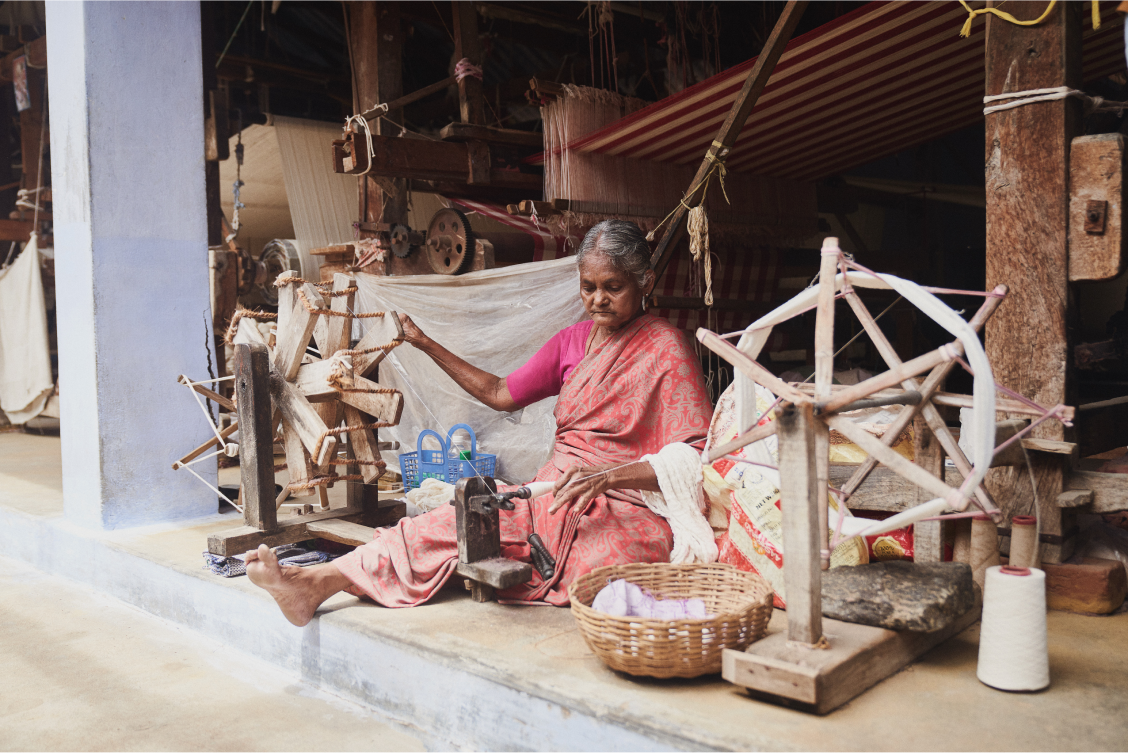
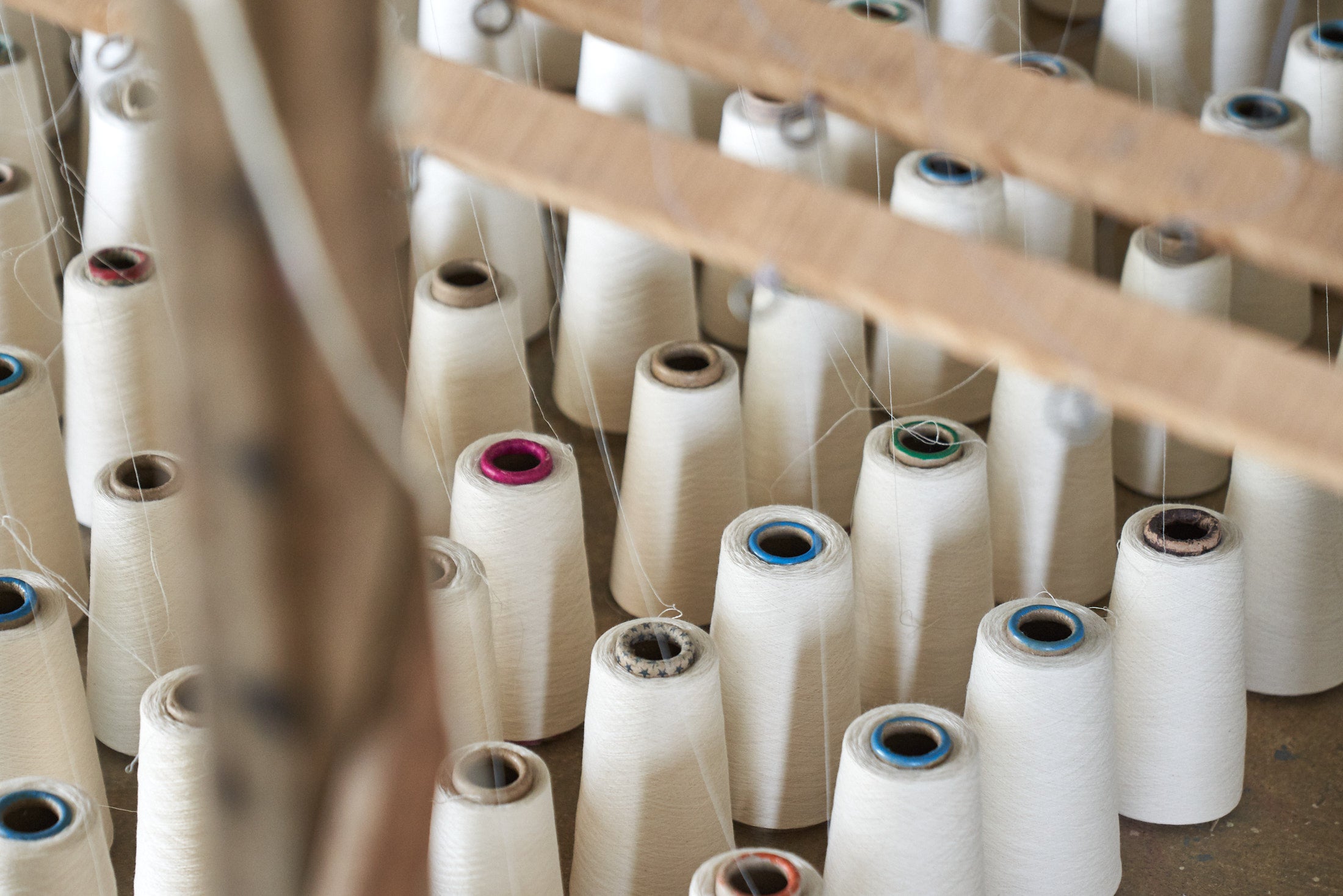
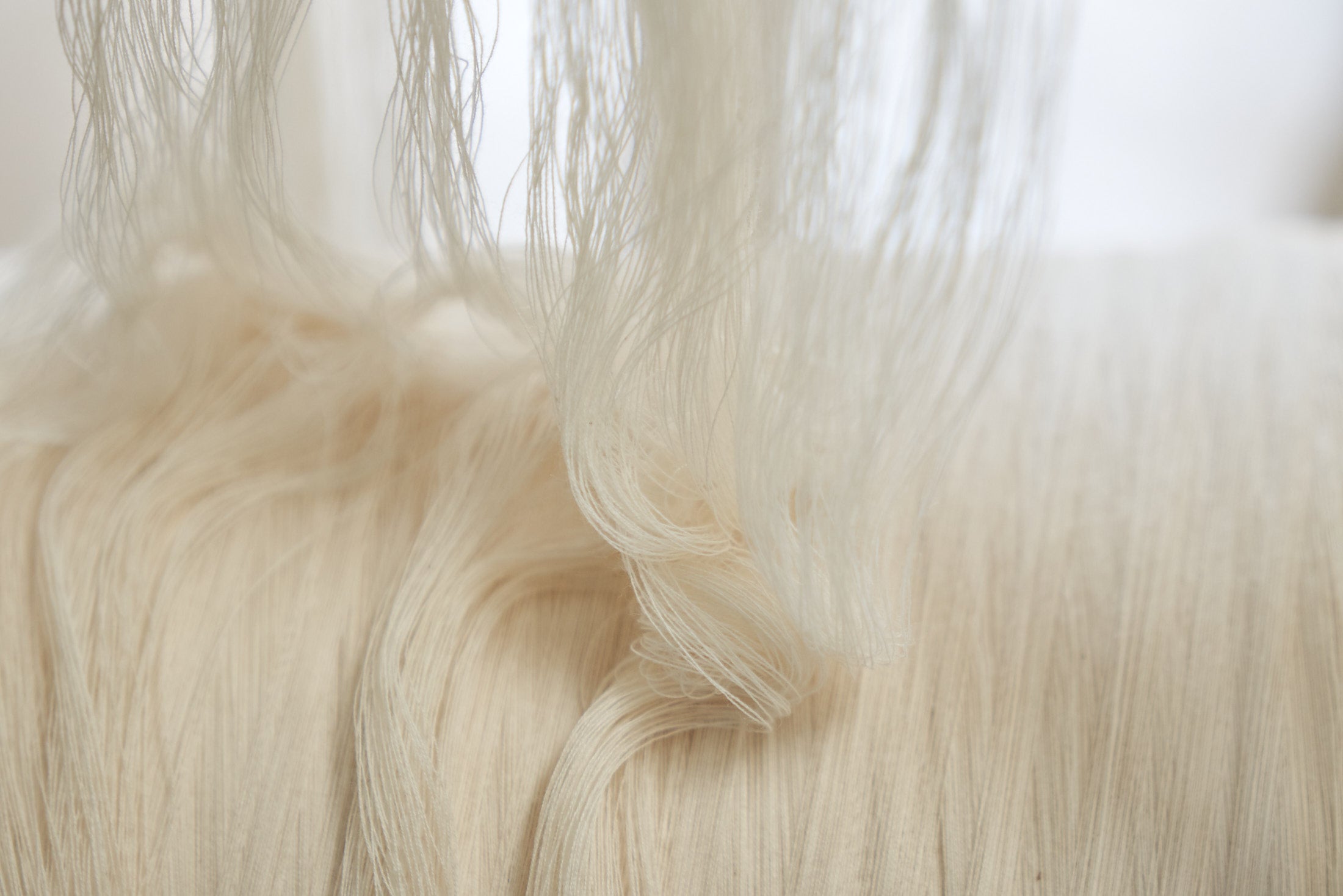
And so Nishanth’s work is the opposite. He’s building systems that are self-renewing. Capitalism, yeah, by virtue of just how it needs to accumulate and accumulate and accumulate, you could call it just accumulation, right? Capitalism can be kind of a charged word, unfortunately, but it is a descriptive word, it’s capital, but where’s that capital going, it’s going into a few hands. And so that’s a form of accumulation that doesn’t work in natural systems. Natural systems spread energy and resources across an ecosystem, so that the whole ecosystem functions as a system. And we are breaking our systems down by isolating financial accumulation.
I think we actually have to slow everything down into what Johan Rockström has designed, which is these boundaries. And if you live within them, life is far more beautiful. You could be surrounded by more wildlife, you could have ecosystems that inspire you deeply on a spiritual level. And your body could be much healthier. I think we can be absolutely headed in that direction. And Nishanth’s work is an emblem and a moniker – he’s holding the mantle of what the future could look like for more of us.
TB: Nishanth, you’re running a business alongside a more NGO-style farm system which benefits both the people and the health of the soil. And I’m really interested in how you balance these two sides of the collective to meet the human needs of the farmers and employees as well as running a fashion business without this trajectory of perpetual growth.
NC: It worked out that this was the most ideal model. Through the farm, we get brand partners on board to commit to the fabric they’re going to buy in a year’s time. And they make a strong commitment financially. And in terms of contracts for the cotton side of things, regardless of what the weather is, regardless of what the environment condition is – if there’s a flood, there’s a drought – all the expenses of a farmer will be met, that stays the same. The farmers would [traditionally] take the most risks. Through the Ōshadi contract with its partners, if there’s been a good yield, if there’s been bad yield, if the weather has been amazing, if the weather is not good, whatever happens, rest assured -the farmers break even at least, if they don’t make the profit.
And let's say if there's a good yield, we have good manufacturing and we have more products, but if there’s not a good yield, it's affecting the farmer, it's affecting us, it's affecting the brand partners. So the risk is even. Everyone benefits when there’s a good yield. And everyone shares the risk when there’s a lesser yield. And when a brand comes in and confirms a year in advance that they are committing to this much cotton, they’re going to place orders sensibly.
The reason all the brands produce abnormally now is because a lot of the risks they push on to the suppliers and farmers, so farmers, they only get paid when the cotton is harvested. And when they take it to the cotton mafia market where they decide these rates, and they suppress the farmers, and then all these suppliers lend the brands such abysmal credit pre-dates, like six months, three months. So what brands tend to do is now they're operating on the money of the farmer, on the money of the supplier, so they kind of like lose track of what's an organic growth and that triggers over producing and then keeping stock and then not being able to pay the suppliers and not being able to pay the brands. There's no logic.
When you think about this system in a very logical sequence of stuff, the reason the people at the bottom of the supply chain (or, you know, I call it top of the supply chain), who are, like, farmers and other stakeholders, those people bear the most risk when it should actually be brands bearing the most risk, because they have the most returns. When you take in economic terms, the higher the risk, the higher the return, but whereas in farmers’ books it hasn’t worked like that in I don’t even know how long. High risk, low returns, that’s what they work on. So the basic economic model, the basic logical sequence of work, nothing is working here.
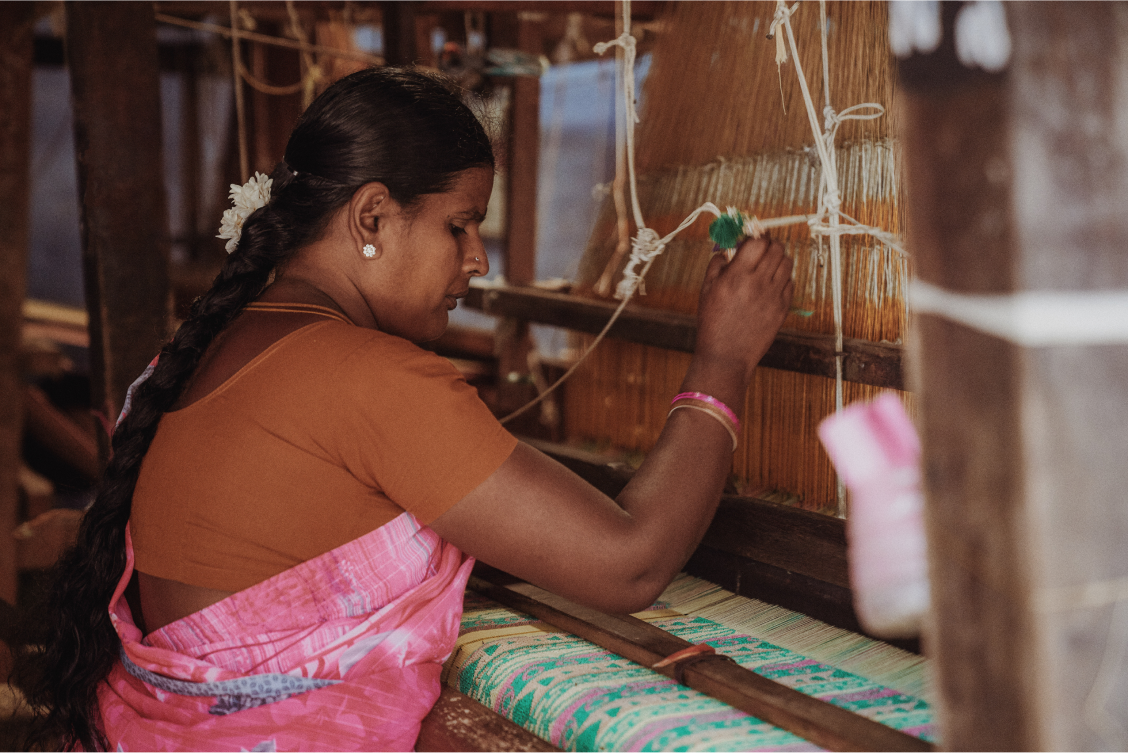
So it was kind of like, all the questions, doubts, everything I thought was wrong about a system or a supply chain, I felt like this way of working or this model of working, I think it might not be the perfect system we are working with, it evolves every day. The kind of system we built was the one system which was fair, at all levels. To come to this system, it took us three years.
If a brand is not making a profit, we shouldn't be making that profit. Because, the cotton, the yield, the break even of the farmers is directly related to the income we make, which is directly related to the income brand makes. And if everyone's making a profit, like us, brand, farmers. If things are bad, in terms of a drought, or a flood or something goes wrong, the farmer gets covered for all expenses. And I think that's the least you could do for a farmer because he bears the most risk.
We invited questions from the audience and we thanked Rebecca for joining us and for her continued support and inspiration. We hope you enjoyed this conversation as much as we did.
FURTHER READING & NOTES:
- The Fibershed website is packed with information and resources
- There’s a book too! Fibershed: Growing a Movement of Farmers, Fashion Activists, and Makers for a New Textile Economy by Rebecca Burgess is published by Chelsea Green
- You can watch Kadaisi Vivasayu on YouTube
- Marin Coast Miwok community
- Listen to Weaving Voices podcast episode 1 with Rebecca Burgess and Jason Hickel
- Check out Jason Hickel’s book Less is More: How Degrowth Will Save the World
- An introduction to Johan Rockström’s Planetary Boundaries framework

